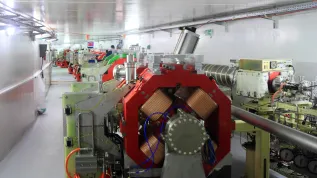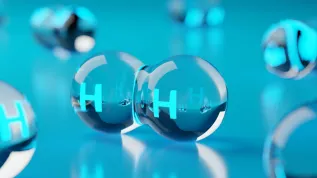
Scientists from the Maria Curie-Skłodowska University in Lublin have developed a new method for recovering rare earth elements from nickel-metal hydride batteries. These elements, used in the production of electric cars and laptops, among other things, are crucial for the development of modern industry.
According to Head of Department of Inorganic Chemistry at the Maria Curie-Skłodowska University (UMCS), Professor Dorota Kołodyńska, her team obtains elements from nickel-metal hydride batteries, i.e. popular AA and AAA batteries. They are classified as hazardous material and are subject to collection. After removing the casing, scientists extract the black mass containing valuable elements from the inside of the batteries.
'Based on many years of research, we have come to the conclusion that, for example, iminodisuccinic acid (IDHA) will be the economic factor that will enable the extraction of valuable elements from the lanthanide group, such as lanthanum, cerium or neodymium, but also other elements, including nickel, cobalt, zinc, from batteries', Kołodyńska explains.
Currently, typical acids and extractants, i.e. liquid solvents, are commonly used to separate rare earth elements. In the group of acids, nitric, sulphuric and hydrochloric acids are most often used. Professor Dorota Kołodyńska explains that this type of acidic waste is difficult to manage and contributes to environmental degradation. Therefore, scientists from UMCS based their method on new biodegradable factors that are safe for humans.
The chemist adds that the separation of the extracted elements is a separate problem. Scientists use sorbents and hybrid materials for this purpose. Kołodyńska designs them herself based on chitosan, alginates and biochar, as well as other materials that can be obtained at a low cost.
She explains that, contrary to popular belief, rare earth elements are not that rare. Some of them occur in the Earth's crust in quantities slightly larger than common elements, but they are very dispersed. Hence their common name.
'We are also working on new methods of obtaining lanthanides from other sources. Together with the Institute of Mineral Resources and Energy Economy and colleagues from Czechia and Turkey, we received a grant to recover lanthanides from such sources as used photovoltaic panels and wind turbines, because it is known from scientific literature that such elements can be found there', she says.
Rare earth elements - the chemist points out - accompany us every day. They are in laptops, computers, phones, electric cars, wind turbines. In the European Union, banknotes are marked with them. The largest producers of rare earth elements, and places where they are mined, are China, the United States and Brazil.
'Few countries have natural resources', Kołodyńska says. 'It is estimated that by 2050, the demand for rare earth elements with a high degree of purity will grow by about 10-15 percent per year. Considering that they are practically non-existent in Europe, we must focus on secondary sources', she adds.
Professor Dorota Kołodyńska's team publishes the results of research on the recovery of rare earth elements, presents them at conferences, intends to patent some of the solutions and is looking for investors. It sees an opportunity in the investment planned in Puławy (Lublin province).
On March 25 this year, Grupa Azoty and Mkango, a company owned by the Canadian Mkango Resources, announced the construction of a rare earth metals refinery at Azoty Puławy. The investment will take 18 months in 2027-2028. The project is also one of the 47 strategic projects of the European Commission, which aim to increase strategic capabilities in the raw materials area.
Piotr Nowak (PAP)
pin/ agt/ ktl/













